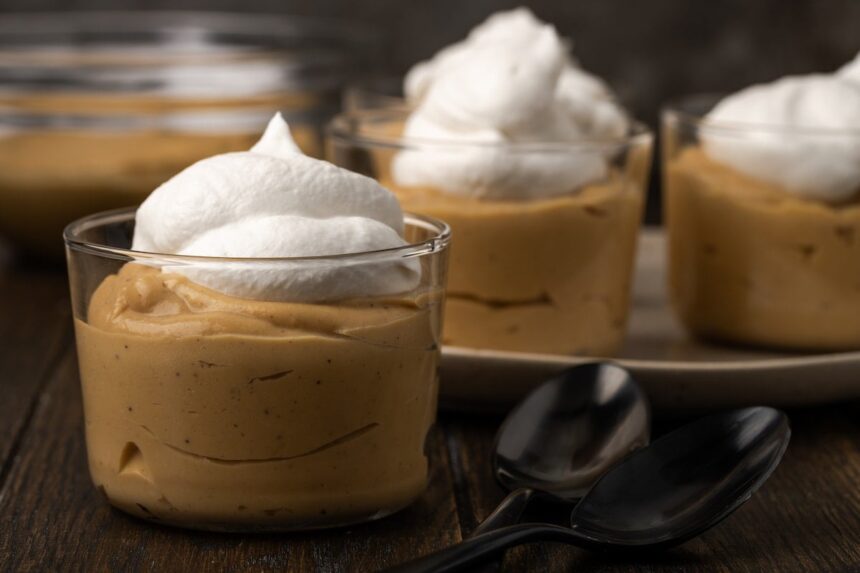Homemade bourbon butterscotch pudding is a creamy stovetop pudding recipe filled with buttery caramelized flavor and a touch of boozy spice. The best part? It’s so simple to make!
Nothing compares to homemade pudding. Just like my chocolate pudding, this easy no-bake dessert is quick to make on the stovetop.
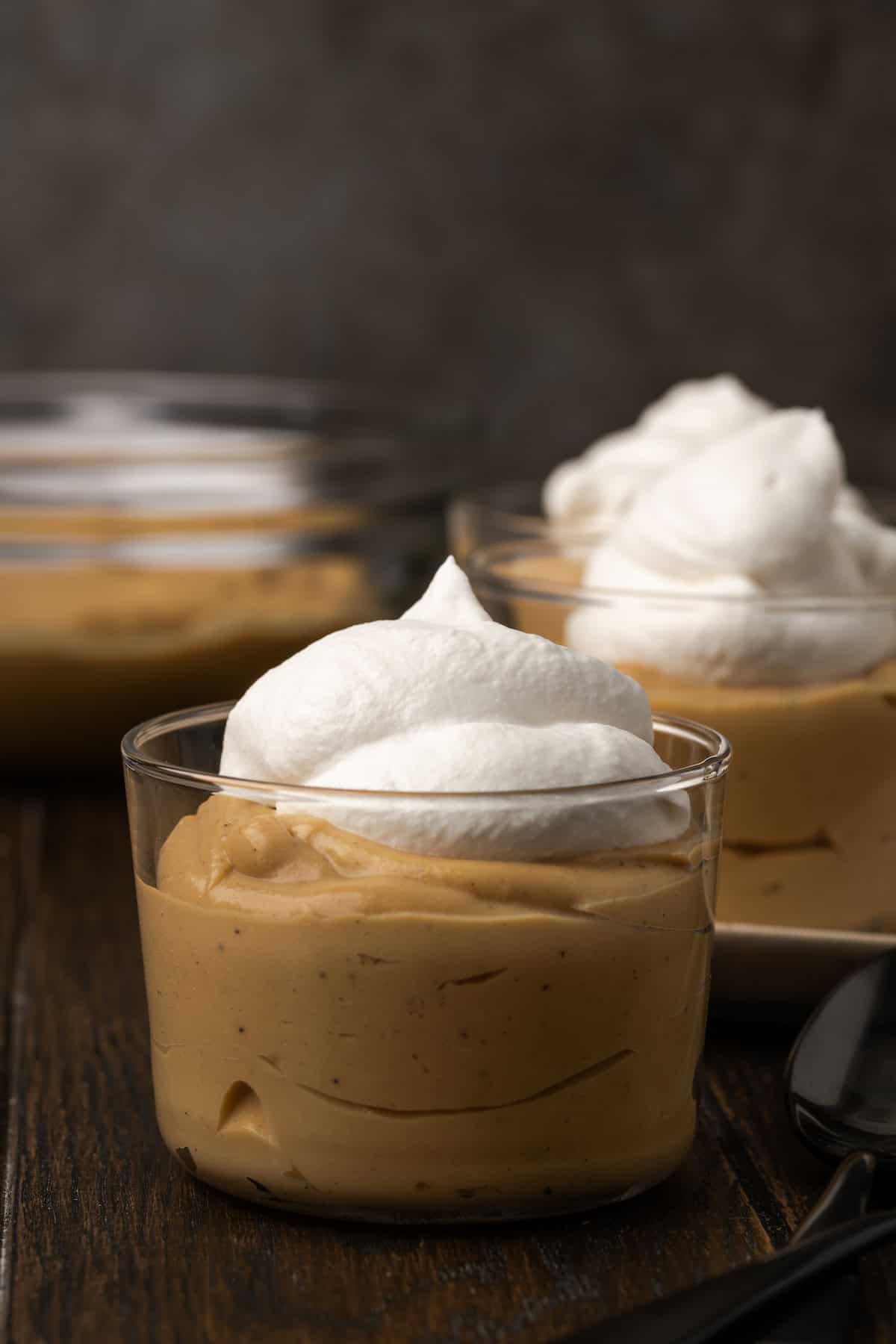
Why You’ll Love This Butterscotch Pudding Recipe
This incredible homemade butterscotch pudding is filled with the flavors of caramelized brown sugar, butter, and vanilla with a splash of bourbon. It’s velvety smooth and completely irresistible topped with whipped cream! Here are more reasons to love it:
- Easy. Making pudding from scratch might sound fancy, but it’s actually so easy. All it takes is a saucepan and a whisk. Sorry, box pudding mix, this party is full!
- Rich and buttery. Bourbon and browned butter make an already rich and delicious butterscotch pudding even richer. It’s like a big, cozy, buttery caramel hug with a boozy twist.
- Silky smooth. This flavor-packed pudding recipe gets its unbelievably smooth and creamy texture from a quick turn in the blender.
- Make-ahead. Your butterscotch pudding needs time to chill and set in the fridge. It’s the perfect make-ahead dessert for parties and holidays.
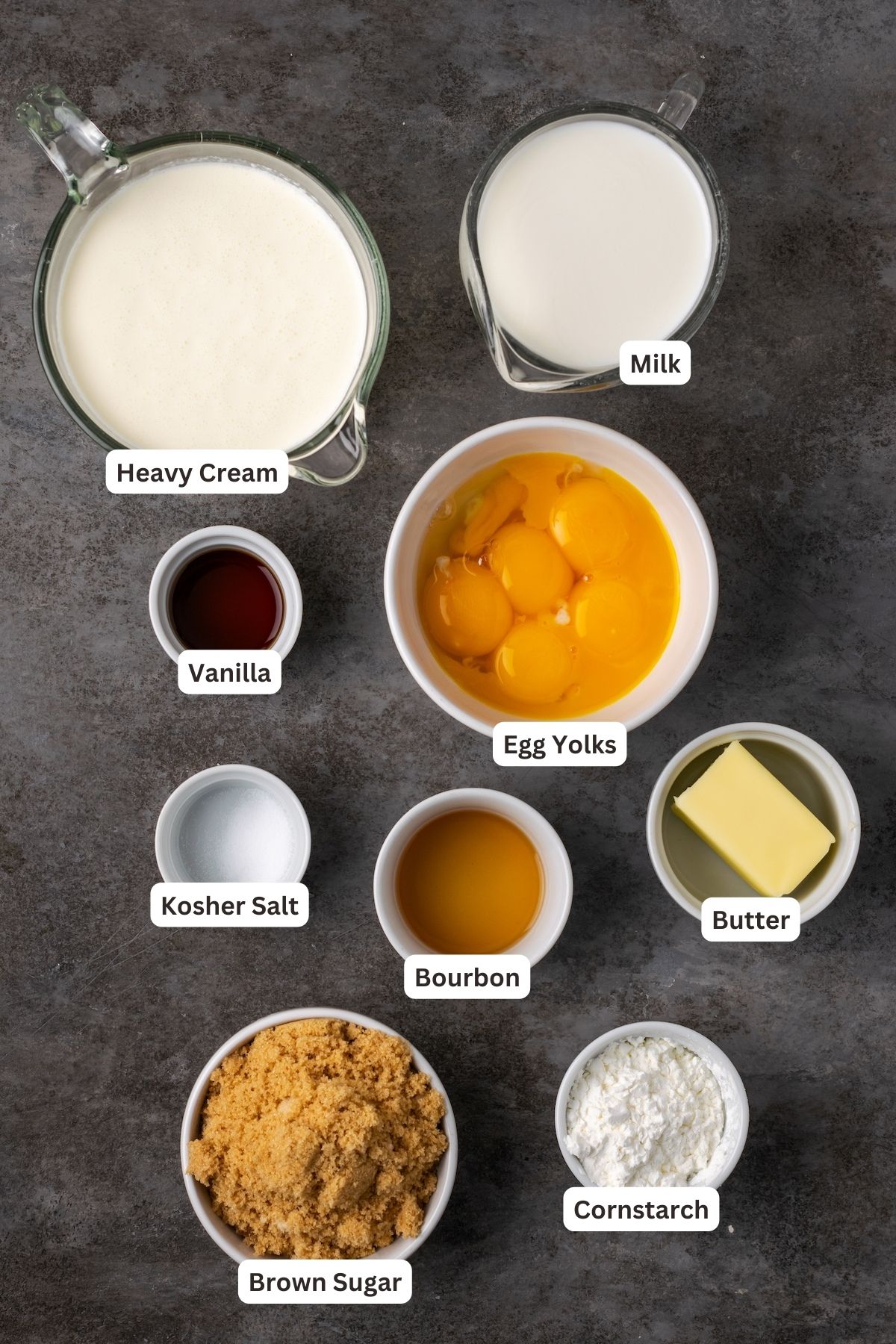
Ingredients You’ll Need
Here’s an overview of what you’ll need along with some notes. Scroll down to the recipe card at the bottom of the post for a printable ingredients list.
- Heavy Cream and Milk – For the creamiest homemade pudding, be sure to use full-fat heavy cream and whole milk (2% also works).
- Vanilla – Real vanilla extract has the best flavor. Skip the imitation vanilla!
- Bourbon – Just a spoonful is enough to deepen the flavors. Another option is brandy or another kind of whisky. If you’d prefer to make this dessert without alcohol, feel free to skip it or add in a small amount of rum extract.
- Egg Yolks – Emulsified egg yolks form the custard base.
- Cornstarch – To thicken the pudding.
- Butter – For browning. You can use salted or unsalted butter.
- Brown Sugar – Light or regular brown sugar. You can also use granulated sugar but the flavor won’t be quite as caramelized.
How to Make Bourbon Butterscotch Pudding
Making this creamy bourbon butterscotch pudding from scratch takes only a few easy steps. Scroll to the recipe card for printable instructions.
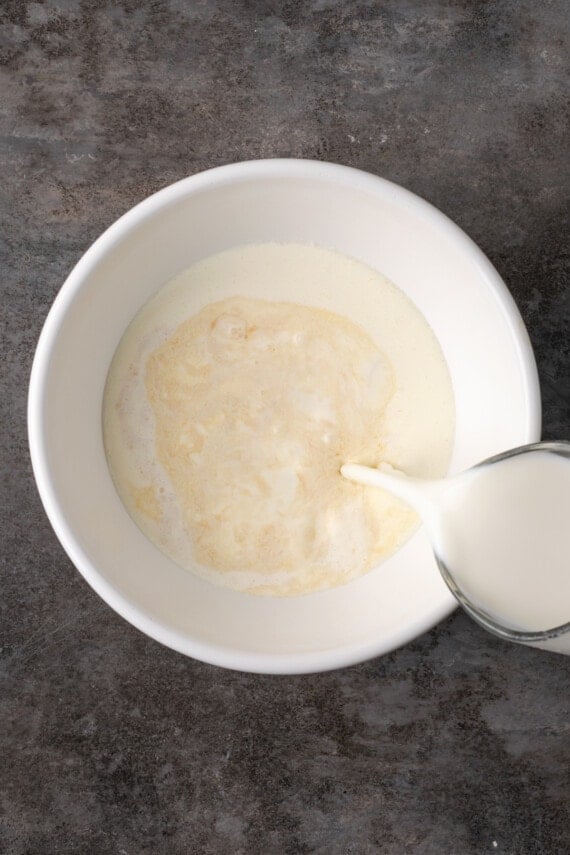
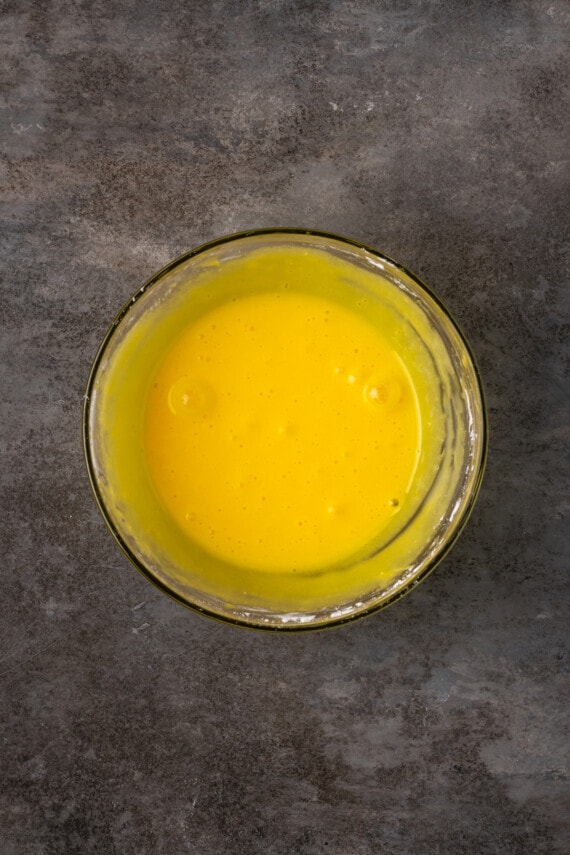
- Combine the pudding ingredients. Start by stirring together cream, milk, vanilla, bourbon, and a pinch of salt. In a separate bowl, whisk the egg yolks with cornstarch.

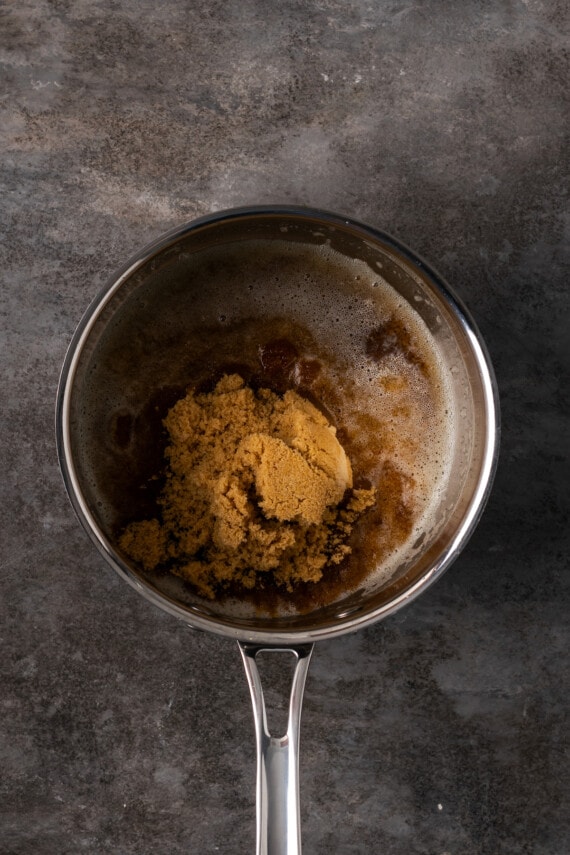
- Make the browned butter. Next, melt butter in a saucepan. As it continues to cook, swirl and stir until the butter darkens in color. Once it’s browned, the butter will give off a nutty aroma. Stir in brown sugar and let it dissolve.
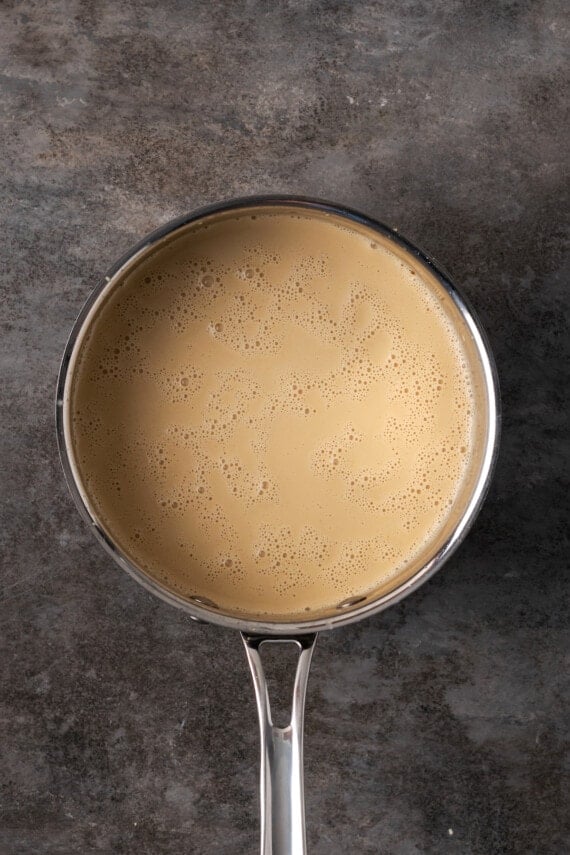
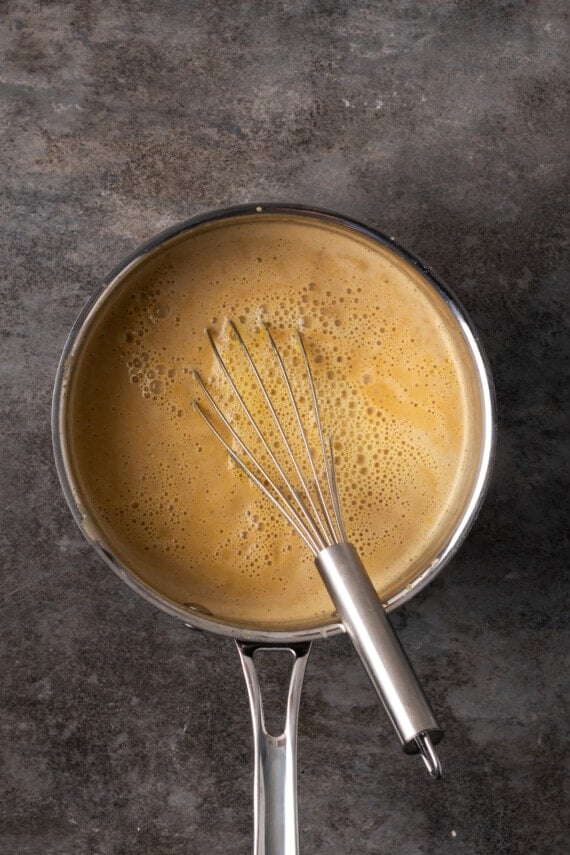
- Prepare the pudding. Slowly add the prepared cream mixture. Don’t stop whisking! Let the mixture cook for about 5 minutes. As soon as it comes to a simmer, take the saucepan off the heat. Whisk in the egg yolks, and keep whisking until the mixture is free of any lumps.
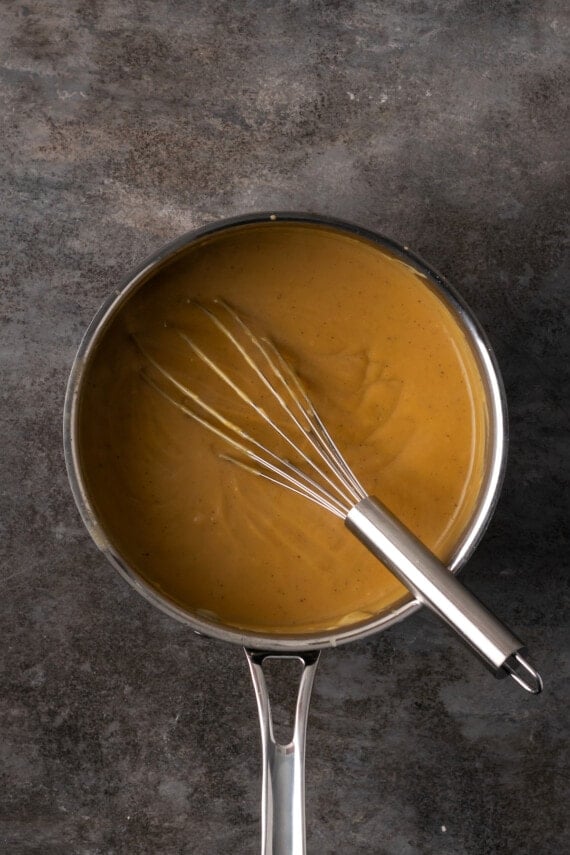
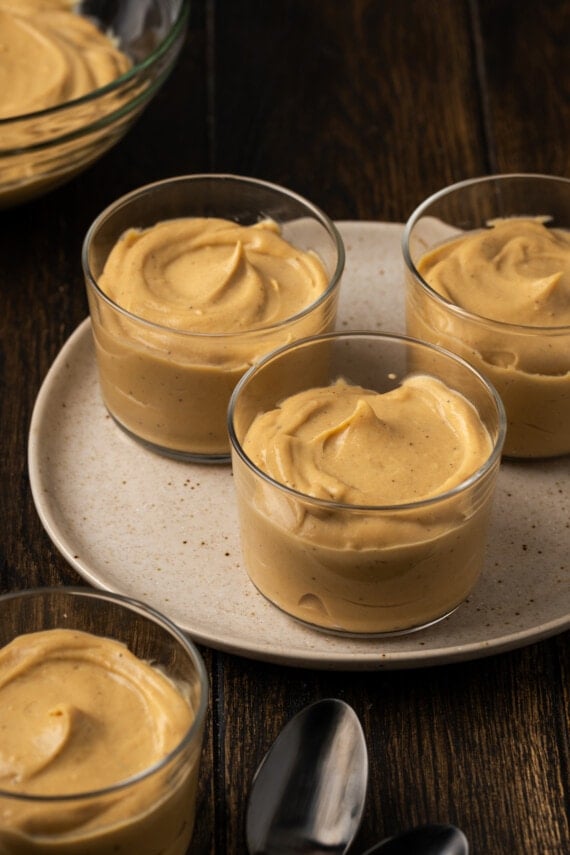
- Thicken the pudding. Place the pan back on the heat. Continue to whisk and warm the pudding for another 5 minutes, until thickened.
- Blend. Lastly, add the pudding to a blender and pulse it a few times to get it silky smooth. Afterward, divide the butterscotch pudding between individual ramekins. Pop everything into the fridge to chill.
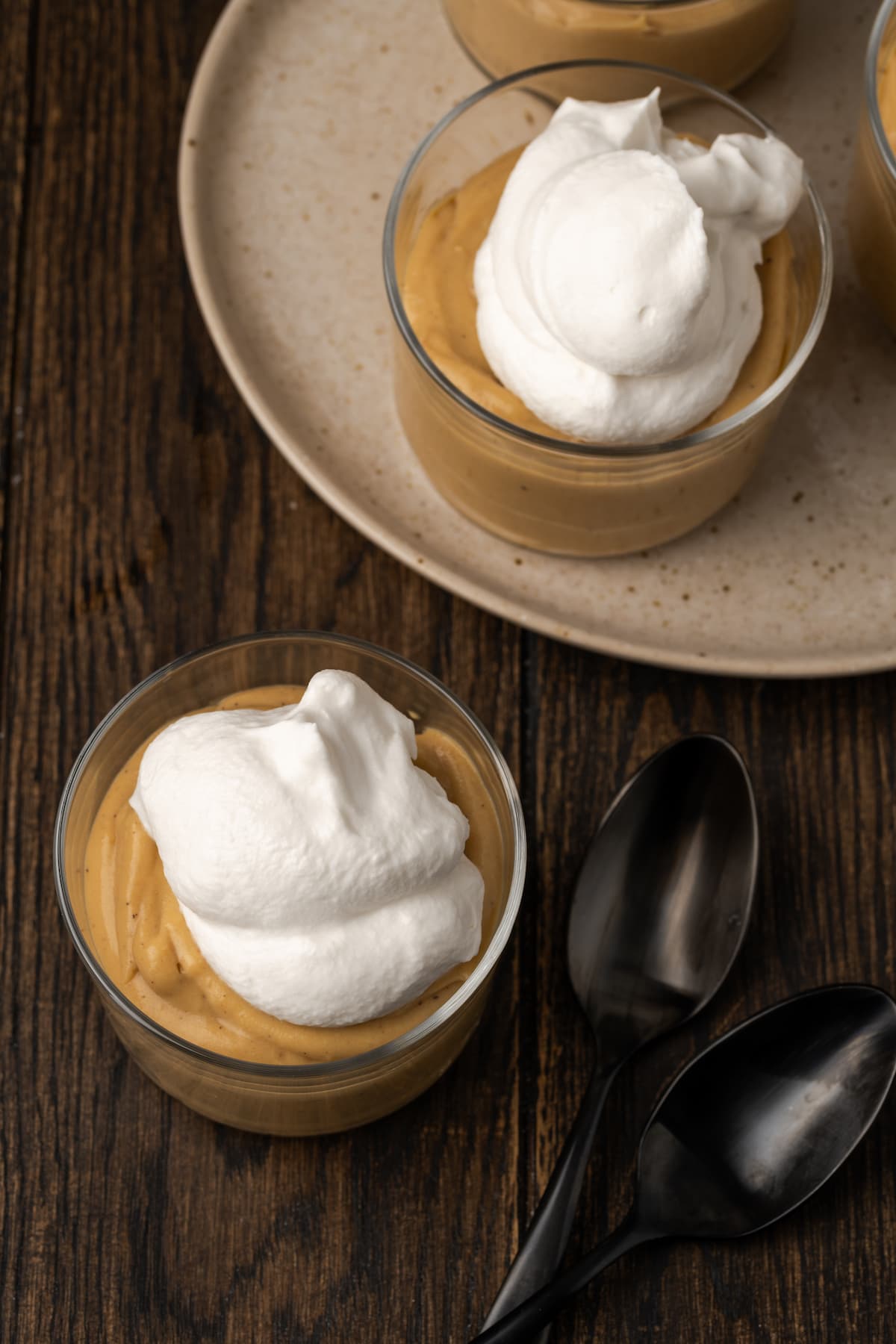
Tips for Success
Feeling inspired to give homemade pudding a try? You won’t regret it. These are some tips and tricks for the best results:
- Keep whisking. Do your best to stir the pudding constantly while it heats up. Otherwise, the mixture might stick to the pan.
- Chill the pudding well. Let the finished butterscotch pudding chill in the fridge for a good 3 hours before serving. This way it’s cool and creamy.
- Stir before serving. Give your homemade pudding a quick stir before you serve it.
- Serve with whipped cream. Top individual servings with a fluffy dollop of whipped cream or crème fraîche for the perfect finishing touch, and dig in!
- More toppings. This pudding is also delicious topped with a sprinkle of flaked sea salt, a drizzle of homemade caramel sauce, or crumbled gingersnap cookies.
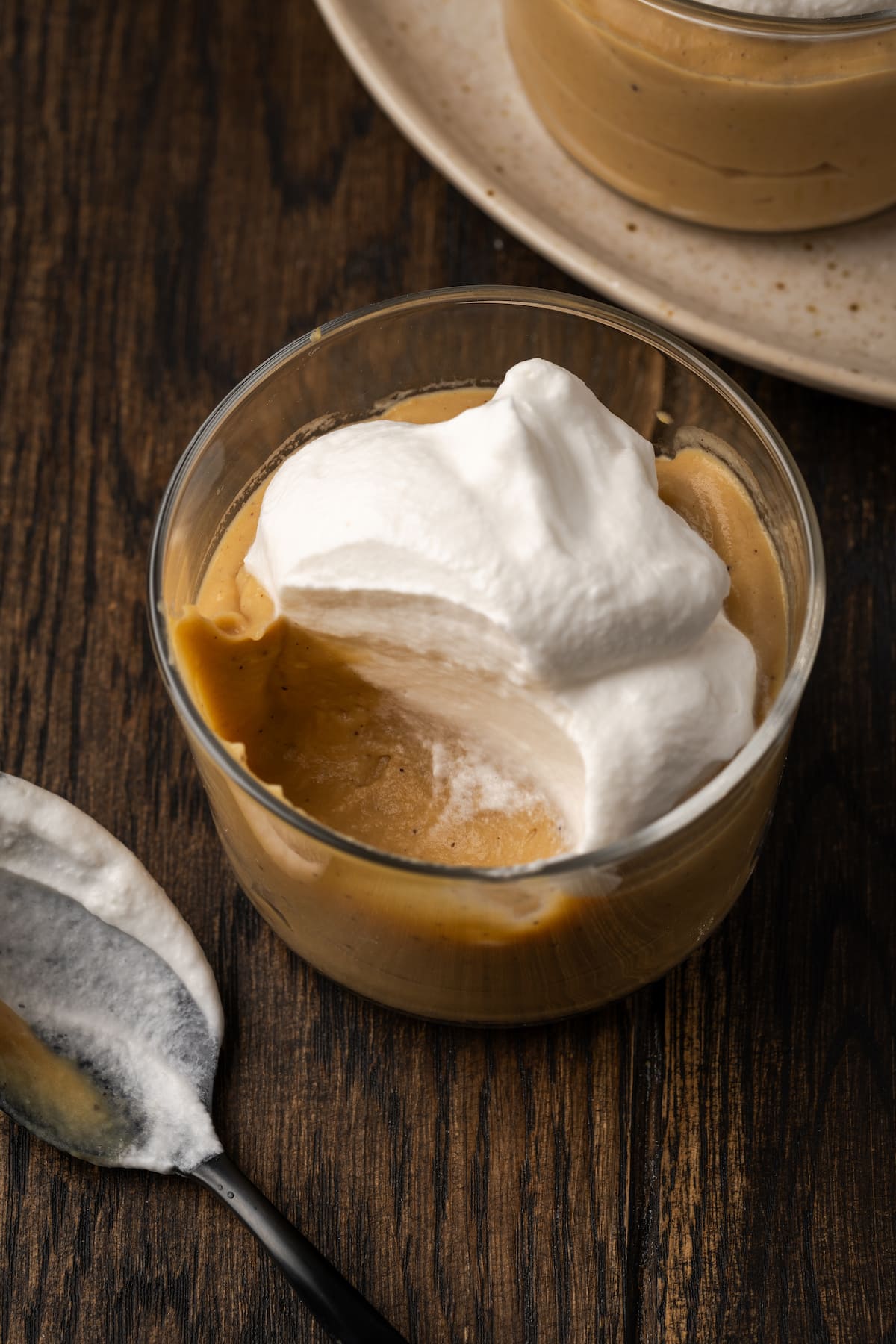
How to Store Pudding
- Refrigerate. Store any leftover bourbon butterscotch pudding airtight in the fridge for up to 5 days. I recommend pressing a piece of plastic wrap directly against the surface of the pudding to prevent a film from forming.
- Freeze. I don’t recommend freezing leftover pudding as the texture becomes grainy when it’s thawed.
More Butterscotch Recipes
Description
This homemade bourbon butterscotch pudding is a creamy stovetop pudding recipe filled with buttery caramelized flavor and a touch of boozy spice.
- 2 1/2 cups heavy cream
- 1 cup milk (whole or 2%)
- 1 teaspoon vanilla extract
- 1 tablespoon + 1 teaspoon bourbon*
- 1/2 teaspoon kosher salt
- 6 egg yolks
- 1/4 cup cornstarch
- 1/4 cup butter
- 2/3 cup packed light brown sugar
- In a large bowl, combine heavy cream, milk, vanilla, bourbon, and salt. Stir to combine and set aside.
- In a small bowl whisk together the egg yolks and cornstarch until smooth. Set aside as well.
- In a medium saucepan over medium heat melt the butter and continue cooking until the butter becomes a golden amber color, swirling pan or stirring, so butter doesn’t burn. Add the brown sugar to the browned butter and stir until combined. Continue cooking until sugar dissolves, about 2 minutes. Slowly add in the cream mixture, whisking constantly. Cook the mixture, stirring frequently, for about 5 minutes over medium heat until the mixture starts to simmer. Remove from heat.
- Slowly whisk in the egg yolk mixture until all is combined (the mixture might seem to produce small lumps, but just continue whisking) and return the mixture to medium heat and whisk consistently for about 5 minutes until the pudding thickens.
- When the pudding has thickened, transfer it to a blender and pulse briefly until smooth.
- Pour the pudding into individual ramekins and chill until set, about 3 hours.
- Serve topped with whipped cream.
Notes
Store airtight in the refrigerator for up to 5 days
*You can omit the bourbon or add in a 1/2 teaspoon of rum extract.


